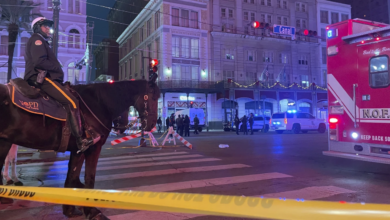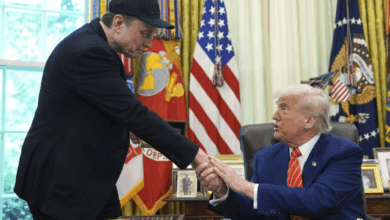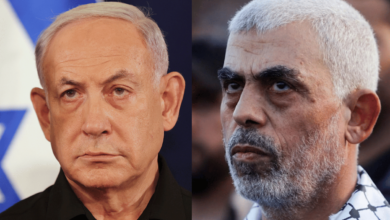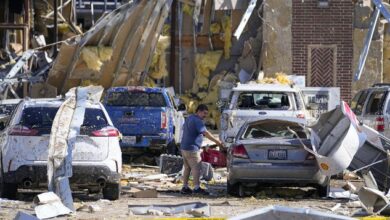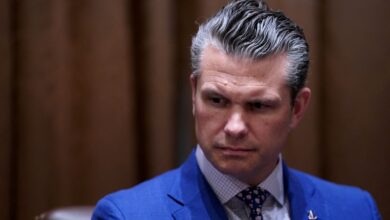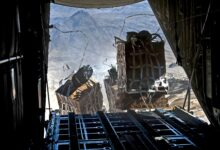Iranian President Ebrahim Raisi Dies in Helicopter Crash at 63

The tragic death of Iranian President Ebrahim Raisi in a helicopter crash marks a significant moment in Iran’s contemporary history. The incident not only ends the life of a prominent political figure but also sets the stage for potential shifts in both domestic and international landscapes.
Tragic End for Iranian President Ebrahim Raisi
Details of the Helicopter Crash
The helicopter carrying Iranian President Ebrahim Raisi and other officials crashed shortly after inaugurating a new dam with Azerbaijan. There was ‘no sign of life’ at the crash site, marking a sudden and tragic end to Raisi’s presidency.
Impact on Iranian Politics
Raisi’s death leaves a significant void in Iranian politics, particularly as he was seen as a potential successor to the supreme leader. His absence reshapes the power dynamics within Iran’s leadership.
Immediate Reactions and Statements
Following the crash, global leaders and domestic figures quickly expressed their condolences. The incident has sparked a wave of mourning across Iran, reflecting Raisi’s complex legacy and the shock of his unexpected death.
Ebrahim Raisi

Raisi’s Political Career
Ebrahim Raisi was a prominent figure in Iranian politics, often seen as a protégé of Supreme Leader Ayatollah Ali Khamenei. His political ascent was marked by significant roles, including his controversial involvement in the mass execution of political prisoners in 1988, which led to international sanctions. Raisi’s career trajectory positioned him as a potential successor to Khamenei, highlighting his deep integration into the core of Iran’s political elite.
His Role in Iran’s Foreign Policy
Raisi’s tenure as president saw him actively engage in international diplomacy, notably with neighboring countries. His visit to the Azerbaijan border, where he met President Ilham Aliyev, exemplifies his hands-on approach to foreign policy, aimed at strengthening regional ties and asserting Iran’s influence on the international stage.
Legacy and Controversies
Raisi’s legacy is a complex tapestry of staunch conservatism and pivotal roles in Iran’s judiciary and executive branches. His leadership was marked by a strong defense of human rights, as he perceived them, but was also shadowed by his earlier roles in the judiciary that drew significant global criticism. His lineage, tracing back to Islam’s Prophet Muhammad, and his religious standing as an ayatollah, added layers to his public and political persona, intertwining his religious authority with his executive power.
The Crash Site and Rescue Operations
Search and Rescue Efforts
The search for President Ebrahim Raisi’s helicopter began under extremely challenging conditions due to dense fog and hazardous weather. Teams on foot, supported by special forces, dog units, and aerial drones, navigated the difficult terrain. International aid included Turkey’s advanced Akıncı drone and the EU’s Copernicus satellite mapping service, enhancing the search capabilities.
Discovery of the Wreckage
The wreckage was located at dawn in a mountainous area, approximately 12 hours after the helicopter was reported missing. The site, described as heavily forested and fog-shrouded, posed significant challenges to the rescue teams attempting to access the area.
Challenges Faced by Rescuers
Rescuers faced a series of obstacles including poor visibility, the complex terrain of the crash site, and the urgent need to find survivors. Despite their efforts, initial reports indicated no sign of life at the crash site, marking a somber moment for the nation and all involved in the rescue operation.
International Reactions to the Incident
Statements from Global Leaders
Following the tragic helicopter crash that claimed the life of Iranian President Ebrahim Raisi, global leaders have been quick to express their condolences and concerns. Countries such as Russia, Iraq, and Qatar have issued formal statements, highlighting the significant impact of this event on international relations.
Impact on International Relations
The incident has undoubtedly stirred the geopolitical landscape, with many nations reassessing their diplomatic strategies with Iran. The immediate international reaction underscores the critical role Iran plays in regional politics and global stability.
Media Coverage Worldwide
The global media has extensively covered the incident, with breaking news alerts and detailed reports emerging from every corner of the world. The coverage not only focuses on the crash details but also delves into the potential ramifications for international diplomacy and the future of Iran’s leadership.
Future of Iranian Leadership
Succession Scenarios
With the sudden demise of President Ebrahim Raisi, the immediate succession falls to the First Vice President, Mohammad Mokhber, who will serve as the interim president for a 50-day custodial period. During this time, preparations for an election to select a new president will be underway. However, the more significant succession question pertains to the role of the Supreme Leader, with current speculations pointing towards a potential shift in power dynamics within the upper echelons of Iranian leadership.
Potential Candidates
The race to become the next Supreme Leader appears to be primarily between Mojtaba Khamenei, the current Supreme Leader’s son, and other key figures within the revolutionary elite. Raisi had been a strong contender, but his untimely death has significantly altered the political landscape, potentially paving the way for Mojtaba Khamenei to ascend to the position without substantial opposition.
Implications for Iran’s Domestic and Foreign Policy
The transition of power will undoubtedly have profound implications for both domestic and foreign policy. The new leadership’s stance will be crucial in determining the direction of Iran’s international relations, especially its interactions with Western nations and its role in Middle Eastern geopolitics. Domestic policy may also see shifts depending on the new leader’s ideology and approach to governance.
Investigation into the Crash
Initial Findings
The investigation into the tragic helicopter crash that claimed the life of Iranian President Ebrahim Raisi has begun with some preliminary findings. The wreckage was discovered in a mountainous area, indicating that harsh terrain may have played a significant role in the accident. The helicopter, carrying not only the president but also other key officials, was found approximately 12 hours after the crash, highlighting the challenges faced by the rescue teams due to the foggy and hazardous weather conditions.
Role of Weather and Terrain
The role of adverse weather conditions cannot be overstated in this incident. The helicopter went down during a severe weather spell, with fog and poor visibility complicating both the flight and initial rescue efforts. The mountainous terrain of the Dizmar forest, near the border with Azerbaijan, added further complexities, making the rescue operations particularly perilous and delaying the discovery of the wreckage.
Ongoing Investigations and Speculations
As the investigation continues, various speculations circulate regarding the potential causes of the crash. Authorities are meticulously piecing together the events leading up to the incident, with a focus on mechanical issues, pilot error, and the severe weather conditions at the time. The international community watches closely, as the outcomes of this investigation could have significant implications for regional stability and aviation safety standards.
Memorials and Tributes
National Mourning in Iran
In response to the tragic death of President Ebrahim Raisi, Iran has entered a period of national mourning. Government offices, schools, and public institutions are closed, and the flags are flown at half-mast. The entire nation reflects on the profound impact of his leadership.
Global Tributes
Leaders from around the world have expressed their condolences and shared their respects. Statements highlight Raisi’s role in shaping Iran’s policies and his significant influence in regional politics. These tributes underscore the global recognition of his political career.
Memorial Services Planned
Memorial services are being organized both within Iran and in various countries to honor President Raisi. These services will include representatives from numerous nations, reflecting his international influence. The details of these services are being coordinated to allow for global participation.
Media and Public Response
Coverage by Iranian Media
Iranian media outlets have been extensively covering the tragic incident, providing continuous updates and expert analyses. The coverage spans across various platforms, including state television, radio, and online news portals. Key media houses like Bloomberg and POLITICO have dedicated significant resources to reporting on every development.
Public Sentiment in Iran
The public reaction in Iran has been one of profound shock and sorrow. Social media platforms are flooded with tributes and condolences, reflecting the deep connection the citizens felt with President Raisi. Discussions about the implications of his sudden demise are prevalent across numerous online forums and community groups.
Global Media Perspective
Internationally, the news has been met with a mix of shock and speculation about the future of Iranian politics. Major global networks like CNN have been actively reporting on the incident, ensuring a wide international reach. The global media’s focus has also been on the geopolitical implications and the potential shifts in regional dynamics.
Legal and Procedural Aftermath
Investigative Processes
Following the tragic helicopter crash, a comprehensive investigation was launched to determine the cause and any contributing factors. Key steps include gathering evidence from the crash site, interviewing witnesses, and analyzing flight data recorders. The findings from this investigation will be crucial in preventing future incidents and may lead to changes in aviation regulations.
Legal Implications
The sudden death of President Raisi has triggered a series of legal proceedings aimed at understanding the circumstances surrounding the crash. This includes examining the maintenance records of the helicopter, pilot qualifications, and adherence to flight safety protocols. The outcomes of these legal inquiries may influence future policies and regulations governing aviation safety in Iran.
Safety Protocols and Revisions
In response to the crash, Iranian authorities are likely to review and revise current safety protocols. This could involve enhanced training for flight crews, stricter maintenance schedules for state aircraft, and improved emergency response strategies. Such revisions aim to bolster safety measures and reassure the public about the reliability of governmental transportation.
The tragic demise of Iranian President Ebrahim Raisi in a helicopter crash marks a profound moment of loss and uncertainty for Iran. At 63, Raisi’s tenure was characterized by significant political and social upheavals, including a mass uprising and a confrontational stance towards the West. His death not only leaves a vacuum in the Iranian leadership but also raises questions about the future direction of the country’s domestic and foreign policies. As Iran mourns the loss of its president, the international community watches closely, anticipating the implications this might have on regional stability and global diplomacy.
Read More:
The Helicopter Carrying Iran President Ebrahim Rais, Foreign Minister Crashed
U.S. Tariffs on Chinese Goods Create Opportunities for Thai Exports and Industries
